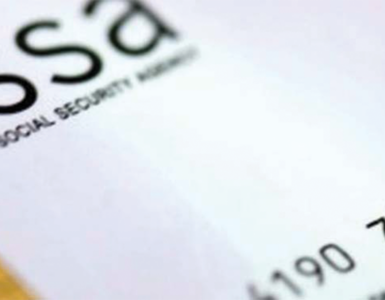COMPLEX: Road accident victims in South Africa often face a lengthy process…
By Marc Andrew
In South Africa, the Road Accident Fund (RAF) plays a crucial role in aiding individuals impacted by road accidents. Yet, the extended duration of the claims process, often stretching over several years, can lead to claimants losing sight of their RAF claim status.
This article is designed to guide RAF claimants and their families on how to stay updated about the status of their Road Accident Fund benefits, as well as the subsequent steps they should take.
Road accident victims in South Africa often face a complex and lengthy process involving multiple stakeholders such as the RAF, attorney firm, medical experts and the legal court system. While it offers a necessary financial respite, navigating this system can be extremely challenging. Whether you’re proceeding independently or with the help of an attorney, staying informed and proactive is crucial.
The dual paths: Direct claim vs. attorney assistance
Pros and cons of direct claims
Directly approaching the RAF might seem straightforward but requires diligent follow-up and understanding of the legal procedures. The advantage? It eliminates attorney fees. However, it demands a high level of personal involvement and legal understanding.
The attorney route
Hiring an attorney simplifies the process, leveraging their expertise for potentially quicker and more efficient outcomes. A competent law firm specialising in personal injury matters will be well-versed in all the finer details of the Road Accident Fund.
By managing the complexities, they will allow you to focus on recovery. Remember, most firms in South Africa work on a contingency fee (no-win no-fee) basis. This means that your lawyers should be well aligned to achieving a speedy and favorable resolution.
The risk of inaction
An unattended claim risks falling into prescription, rendering it void. This can occur if not lodged or followed up in a timely manner.
Under the Road Accident Fund Act, compensation claims must be filed within a three-year period from the accident’s occurrence. Section 23(1) of the Act outlines this as the prescription period. If a claim isn’t lodged within this timeframe and no specific exceptions apply, the right to claim is forfeited, meaning the opportunity to seek compensation through the RAF is lost.
Taking responsibility
A successful RAF claim may equate to hundreds of thousands, or even millions of Rands. For many, this represents their largest lifetime financial asset (perhaps with the exclusion of home ownership or a lifetime pension fund). Therefore, it is imperative that the process be approached with the appropriate seriousness.
Claimants should be encouraged to keep a file where they can maintain detailed documentation throughout the lifecycle of the claim. This includes dates, contact details, reference numbers, and notes from all telephonic discussions of personal consultations. Active participation in your claim is vital to ensure you are not left behind.
CHECKING THE STATUS OF YOUR CLAIM
Starting with your attorney
If you’ve engaged an attorney, they should be your first point of contact. They can provide updates on litigation, settlement, or payment processes, and guide on next steps and expected timelines.
Most attorneys have websites, and their contact information should be easily found online. If you know the name of the attorney within the law firm running your case, then contact them directly.
Specialist attorneys should easily be able to update you on where your matter lies in the litigation, settlement or payment process as well as next steps and indicative timelines. However, one should be aware that much of the process lies in the control of the RAF or the court system, and so timelines can become delayed beyond your attorney’s control.
Direct contact with RAF
You can also reach out to the RAF directly. Their call center (phone number 012 621 1691) is a good starting point. Alternatively, there are several RAF walk-in centres located across the country.
Each claim gets a unique “RAF Link Number”. This is comparable to an ID Number but for the Road Accident Fund, and serves as your personal reference for all follow-ups.
Encountering delays and non-responses
There are instances where reaching your attorney or getting satisfactory responses becomes challenging. This is where patience and persistence play a role. You should keep a log of all contact attempts over a period of time. Telephonic, written and face-to-face channels should all be attempted.
Legal Practice Council: The last resort
Unfortunately there may be situations where a claimant is unable to reach their attorney, or after continuously following up one is still unable to receive satisfactory answers. In this instance the Legal Practice Council (LPC) can be contacted.
However, bear in mind that unwarranted complaints may actually frustrate your lawyers and delay the progress of your matter – so the LPC should only be contacted as a last resort once all other avenues have been exhausted.
Navigating the Road Accident Fund claim process requires a mix of patience, persistence, and informed action. Whether you choose to handle it directly or through an attorney, staying actively involved and well-informed is key to successfully managing your claim.
Remember, your RAF claim is a significant aspect of your journey towards recovery and stability. Treat it with the diligence and attention it deserves. – Source: GoLegal and RAF Cash, a company committed to empowering road accident victims. They provide comprehensive support, offering expert guidance to navigate the legal, financial, and recovery challenges associated with the RAF
The hidden costs of loadshedding
SCENARIO: As householders endure the disruptive rhythm of loadshedding, one compelling question is, who bears the cost of our appliances silently deteriorating with each power outage?…
By Rein Snoeck
The most obvious toll that rolling power outages take is a loss of productive time – we can’t work, we can’t cook, and we can’t enjoy after-hours leisure activities, such as watching TV and using the internet. There are, however, other costs involved that may not immediately spring to mind but end up hitting us in the wallet.
The various electric appliances and electronic devices that are an integral part of our lives are not built for ongoing power-outs and power-ins. The first hurdle they encounter happens when the power returns after a cut. It often does so in a surge – a power tsunami, if you will – that can knock your devices out of commission. Stand by for repair bills, or in a worst-case scenario, you may even have to replace the item in question.
Then there’s the spectre of unscheduled power cuts. Many items – computers specifically – don’t take kindly to being turned off at the mains, as opposed to going through their correct power-down procedure. The unexpected power break may even result in lost work or data.
A third factor to consider is the cumulative effect of devices being turned on and off continuously. A fridge that’s expected to have a lifespan of about 15 years may, for example, have it reduced to as little as three years, because of the ongoing assault of loadshedding.
What are my rights?
Ultimately, one ought to be able to claim from Eskom for faults caused by loadshedding, right? Theoretically, yes, but it’s a lengthy and convoluted process, and experience has shown that the chances of a positive outcome are slim. Do you have the time, money, and stamina to drag yourself through this?
It’s likely that your insurance will pay for goods damaged by the power cuts, although conditions vary between insurers, and there are provisos. There is also the real possibility of your premiums increasing after such claims. For example: Was the appliance in question connected to a surge protector? You might also have to deal with your home being visited by an insurance assessor.
Even in the best-case scenario of your insurer paying you out in full (or, rarer yet, Eskom doing so) no one enjoys the hassle of the paperwork, the phone calls, and other logistics involved. Your easiest option is to ensure that all your sensitive devices, from fridges to desktop computers, are connected to power backup systems, in addition to surge protection – which may or may not be built into these pieces of equipment. That way, when the power cuts or returns, your devices will continue to receive a smooth and uninterrupted electrical supply.
This said, although the problem of loadshedding is an immediate one, many households in these financially trying times are not necessarily able to bear the entire cost upfront. In response, Alumo Energy provides different-sized solutions for different-sized homes, and offers consumers the option to pay overtime or even rent a system. By offering people finance packages, we allow them to resolve their power problems immediately, whilst easing their costs over time.
Beware the quick-buck merchants
Unfortunately, the overwhelming power issues being experienced by consumers have led to an exponential growth in fly-by-nighters; questionable businesses that have identified a need and opportunity, but don’t necessarily have the knowledge, experience, or commitment to provide proper advice upfront, and then, after-sales service. Many of these outlets don’t even stay in business long enough to fulfil their warranty obligations.
Instead, seek a professional solar solution provider with a strong track record and employees who are all experts in their field. At Alumo, we guide the consumer through the entire process and ensure that everything runs to plan. And, unlike the power supply, we can be relied upon.
*Henkemans is CEO of Alumo Energy






